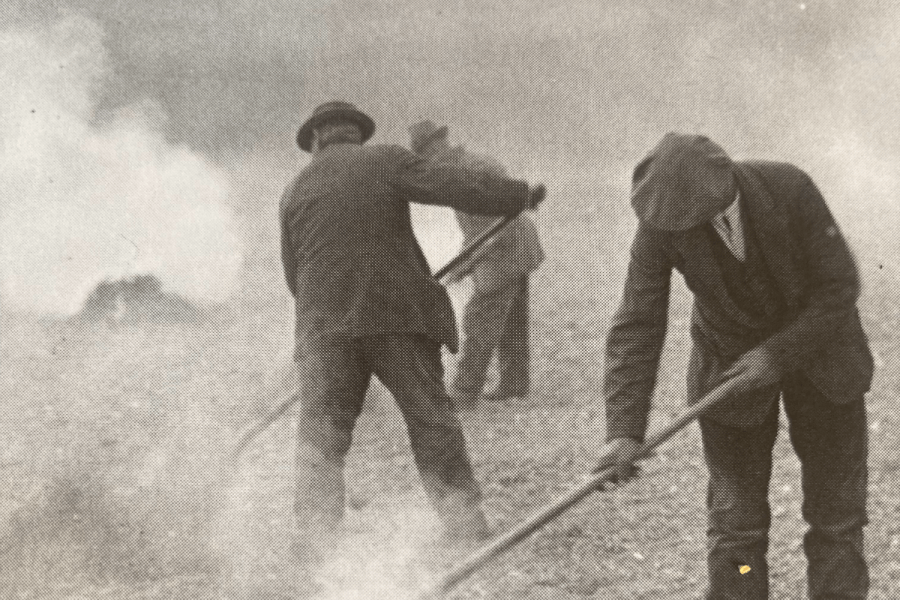By Guy Smith
I’d guess that I’m not the only one who has witnessed the two immediate generations who came before me start to disappear and now I wish I’d spent more time talking to them. The key testimony of the generation of farmers and farm workers that were born before the Second World War is they can recollect a very different style of farming to that which we know today.
As a lad I grew up with men and women who worked on farms powered by horses and human muscle rather than by tractors and machines. What struck me at the time was that none of them talked in terms of ‘the good old days’. They all preferred the work on mechanised farms. Many, then in their forties and fifties, bore the scars and infirmity of years of repetitive manual labour – armed with hand hoes, shovels and pitchforks.
For me as a teenager, dead lifting hundredweight hessian sacks full of wheat was seen as some sort of agricultural coming of age ritual. I remember at the time being told by my elders I’d live to regret my weightlifting prowess. Now, as my lower back tweaks and grinds to wake me up in the night, I wish I’d paid them more heed.
One key reason it’s important to accurately document pre-war farming is that it’s starting to be seen largely through rose-tinted spectacles. There is an alluring nostalgia that paints an idealised picture of farming before machinery and pesticides became commonplace on arable farms. It’s now forgotten that it was common to lose crops to weeds, diseases and pests before the advent of herbicides, fungicides and insecticides.
While I’m enthusiastic about finding non-chemical forms for controlling these problems, I’m also mindful that it was for good reason that our forebears readily turned to pesticides when they became widely available in the fifties and sixties. They knew that even the best husbandry practice could be defenceless in the face of a June outbreak of yellow rust as it ruined a wheat crop in its final stages of ripening.
I remember one old boy telling me a story that as a young lad in the 1940s, he was sent to drill a two acre field with turnip rape. At the end of the day he noted, to his horror, he had forgotten to open the bag of seed that he had put in the hopper on leaving the yard. On confessing his sin to the foreman he was told not to worry as the farmer would never be any the wiser as most turnip rape crops were lost to various bugs and beetles before they had a chance to establish.
Even I can just about remember cereal crops festooned with thistles and couch grass before the wonder product that was Roundup became widely available. It’s interesting that many arable farmers under fifty today have forgotten that when it was first introduced, glyphosate was primarily a major step forward in controlling perennial weeds through its systemic action. It was so successful that weeds like thistles and couch grass are now almost forgotten, as is glyphosate’s part in their demise as major arable weeds. But we would forget this at our peril if we suddenly found glyphosate banned on the mistaken understanding that weed rakes would probably do the job instead.
By way of illustration, I include a picture from the 1930s of a field gang scratching up and burning couch grass roots by hand with pitch forks. You wonder if it’s only a matter of time until Countryfile feature some modern-day re-enacted version of this as evidence we wouldn’t miss glyphosate if it was banned. No doubt someone in Whitehall is thinking of giving such practice a grant on the understanding it would promote an old virtuous craft that needs to be revived.
This article was taken from the latest issue of CPM. For more articles like this, subscribe here.




